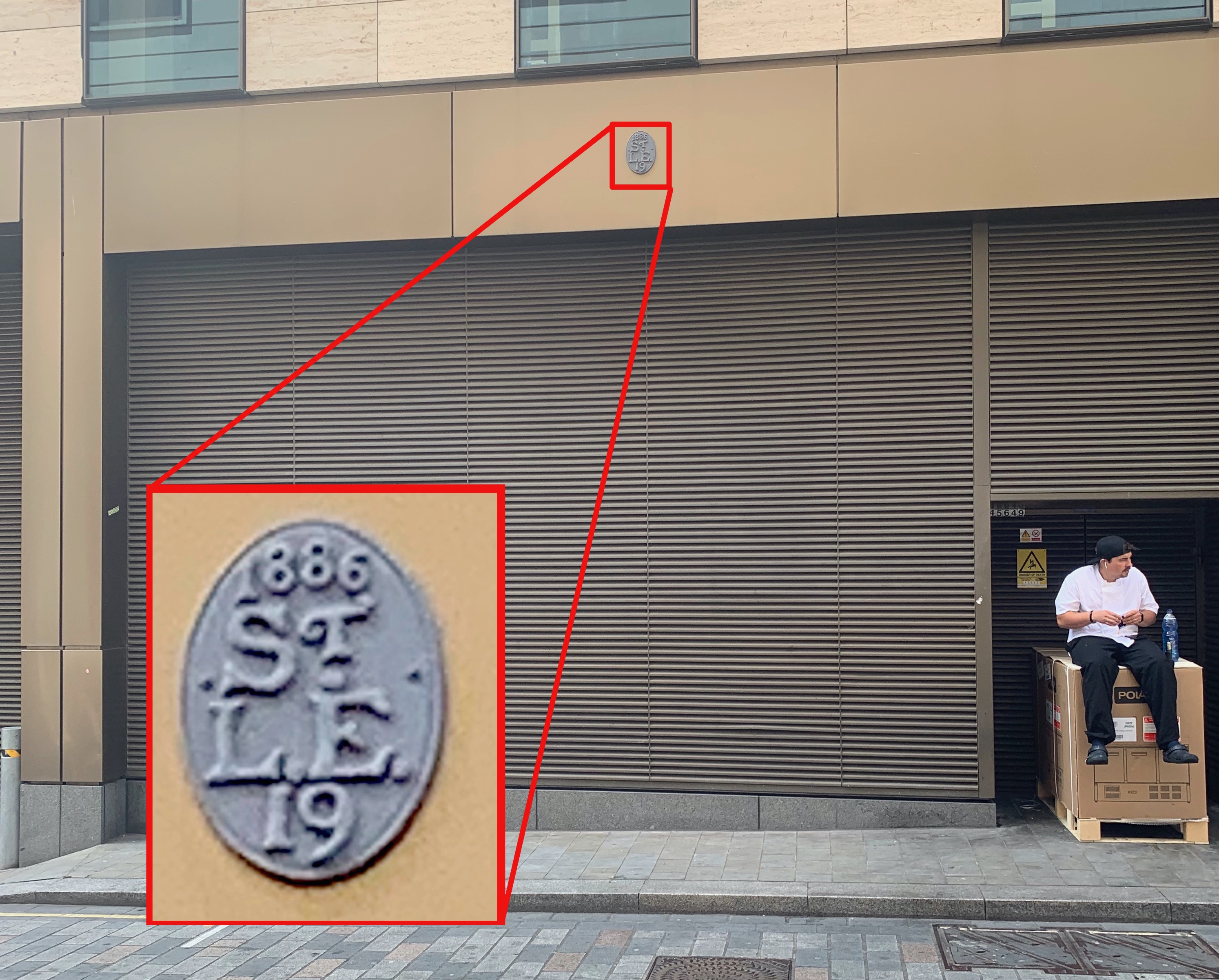St Leonard, Eastcheap on:
[Wikipedia]
[Google]
[Amazon]
St. Leonard, Eastcheap, sometimes referred to as ''St Leonard Milkchurch'', was a parish church in the

Diocese of London
St Edmund & St Mary Woolnoth
City of London
The City of London is a city, ceremonial county and local government district that contains the historic centre and constitutes, alongside Canary Wharf, the primary central business district (CBD) of London. It constituted most of London f ...
. Of medieval origin, it was destroyed in the Great Fire of London in 1666 and not rebuilt. The site of the church was retained as a graveyard.
History
The church stood in Fish Street Hill, on the corner ofEastcheap
Eastcheap is a street in central London that is a western continuation of Great Tower Street towards Monument junction. Its name derives from ''cheap'', the Old English word for market, with the prefix 'East' distinguishing it from Westcheap, ...
, in the ward of Bridge Within. It was also known as St Leonard Milkchurch, a name, according to John Stow, derived from one of its builders, William Melker. Its existence is recorded as early as 1259.
During the 19th century, excavations in Eastcheap for the new Metropolitan District Railway revealed the foundations of the church. They showed the remains of a long chancel and a nave, the masonry on the north side of which incorporated what was believed to be Roman brickwork.
The patronage of the church belonged to the prior and abbey of Christchurch, Canterbury, and then to the dean and chapter of Canterbury Cathedral.
The church contained monuments to the members of the Dogget family, including John Dogget, who died in about 1456 and gave land to the church.
In 1618 the church was badly damaged by fire. The steeple, with its lead-covered spire, and the west end of the church were so badly damaged that they had to be demolished, and reconstructed on new foundations. The south wall was then also rebuilt, and other repairs made. The church was destroyed in the Great Fire of London in 1666 and not rebuilt. Instead its parish was united with that of St Benet Gracechurch
St Benet Gracechurch (or Grass Church), so called because a haymarket existed nearby (Cobb), was a parish church in the City of London. First recorded in the 11th century, it was destroyed in the Great Fire of London of 1666 and rebuilt by the o ...
and the site of the church was retained as a graveyard.

Present day
The parish now forms part of the combinedparish
A parish is a territorial entity in many Christian denominations, constituting a division within a diocese. A parish is under the pastoral care and clerical jurisdiction of a priest, often termed a parish priest, who might be assisted by one o ...
of '' St Edmund the King and Martyr, and St Mary Woolnoth Lombard Street with St Nicholas Acons
Geographic coordinate system, Coordinates:
St Nicholas Acons was a parish church in the City of London. In existence by the late 11th century, it was destroyed during the Great Fire of London of 1666 and not rebuilt.
History
The church was ...
, All Hallows Lombard Street, St Benet Gracechurch
St Benet Gracechurch (or Grass Church), so called because a haymarket existed nearby (Cobb), was a parish church in the City of London. First recorded in the 11th century, it was destroyed in the Great Fire of London of 1666 and rebuilt by the o ...
, St Leonard Eastcheap, St Dionis Backchurch and St Mary Woolchurch Haw
St Mary Woolchurch Haw was a parish church in the City of London, destroyed in the Great Fire of London of 1666 and not rebuilt. It came within the ward of Walbrook.
History
The church of St Mary Woolchurch Haw was an ancient foundation, dati ...
'' - usually shortened to "St Edmund & St Mary Woolnoth". It is part of the Church of England
The Church of England (C of E) is the established Christian church in England and the mother church of the international Anglican Communion. It traces its history to the Christian church recorded as existing in the Roman province of Britai ...
's Diocese of London.St Edmund & St Mary Woolnoth
References